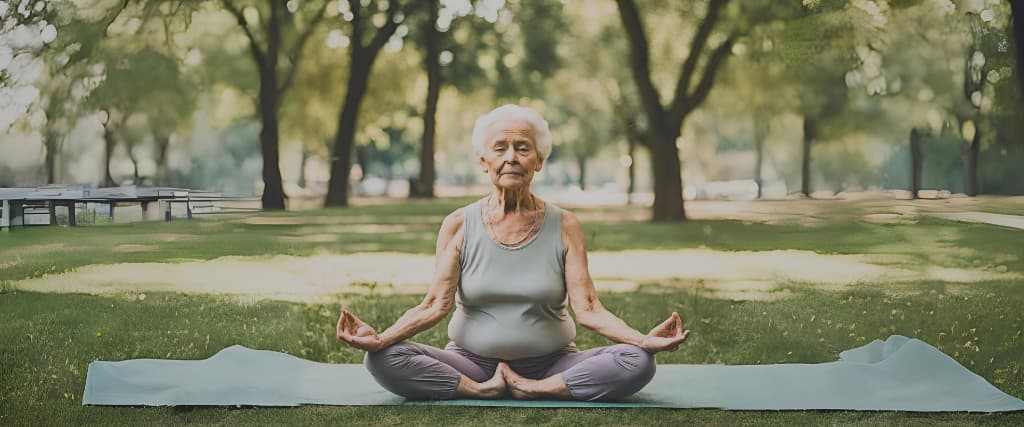Retirement marks a new and exciting chapter in our lives, offering an abundance of free time and opportunities to explore new hobbies, travel, and spend quality time with loved ones. It is a time to relish the fruits of our labour and enjoy the rewards of a lifetime’s work.
However, as we transition into this new phase, it becomes increasingly important to prioritise our health and well-being, particularly through regular exercise.
Exercise plays a vital role in maintaining a vibrant and fulfilling retirement. It helps us stay physically fit and contributes significantly to our mental and emotional well-being. Engaging in regular physical activity can enhance our energy levels, improve cognitive function, boost mood, and reduce the risk of chronic diseases. It is a critical component of healthy ageing, allowing us to make the most of our retirement years and enjoy a higher quality of life.
This article will explore the importance of exercise for retirees and provide practical advice on incorporating physical activity into daily routines. Whether you are a retiree looking to begin a fitness journey or seeking to optimise your current exercise routine, this guide will be a valuable resource to help you navigate the world of fitness in your golden years.
Benefits of Exercising

Keeping active as you become older can do wonders for your general health. Regular exercise can increase your energy levels, assist you in maintaining a healthy weight, and even lessen some of the typical signs of ageing. In addition to being healthy for the body, exercise is also wonderful for the mind and the soul.
There are several strategies to stay active when you’re over 50, regardless of whether your objective is to maintain your present weight or improve your general vitality. The following are some benefits of exercising for people over 50:
Increased Energy and Strength: Regular exercise can improve cardiovascular health, raise energy levels, and help you gain muscle and bone mass. You consequently get a feeling of strength and vitality.
Studies have shown that regular exercise can lower the risk of or postpone the onset of a number of illnesses and chronic conditions, such as high blood pressure, type 2 diabetes, Alzheimer’s, lung cancer, colon cancer, osteoporosis, arthritis, high cholesterol, and conditions related to joint and muscle pain, heart disease, and stroke.
Reduced Symptoms of Chronic Conditions: Menopause symptoms, joint pain, weight gain, weakened immune system, and poor digestion are just a few of the symptoms that exercise can assist with.
Maintaining Independence: Exercise helps you remain independent and mobile as you age by enhancing your strength, flexibility, coordination, and balance.
Improved Quality of Life: Regular exercise lowers the risk of diseases, lessens the symptoms of chronic conditions, and encourages independence, all of which contribute to a higher quality of life and the capacity to fully enjoy life.
Improved Brain and Emotional Health: By elevating mood and releasing endorphins, exercise reduces stress levels. Additionally, it lowers the chance of dementia, cognitive decline, and depression.
Exercise on a regular basis can enhance the quality of your sleep, resulting in more peaceful evenings. The quality of sleep can be considerably improved with just 150 minutes per week of moderate to vigorous exercising.
Maintaining a Healthy Weight Range: Maintaining a healthy weight range is important for general health since it reduces your risk of developing chronic health problems and slows down your metabolism, which slows down with age.
It’s crucial to keep in mind that it is never too late to begin enjoying the advantages of exercise. Studies have shown that beginning an exercise programme in middle age or later can still result in considerable improvements in fitness and general health, even if you have spent the most of your life being out of shape.
Developing an Exercise Routine

The following recommendations should be taken into account while developing an exercise schedule:
Regular Exercise: The amount of exercise you should perform each week depends on your present level of fitness, your health, and your goals. Aiming for 150 minutes of moderate aerobic activity or 75 minutes of vigourous aerobic activity each week, with bouts lasting at least 10 minutes, can, however, have significant positive effects on your health.
A well-rounded fitness regimen should include three essential components: stretching, strength training, and aerobic exercise. Focus on exercises like walking, swimming, dancing, or cycling during your three to four 20-minute aerobic sessions each week. To improve muscles and bones, use strength-training activities utilising weights, elastic bands, or machines. Finally, to increase flexibility and lower the chance of injury, integrate stretching exercises like yoga, tai chi, or pilates.
Keep It Diverse: Vary your activities to avoid boredom and maintain enjoyment in your routine. You’re not required to limit yourself to workouts intended for elders. If you can safely perform more difficult activities, go for it.
Best Time For Retirees To Exercise

The best time to exercise for retirees can vary depending on individual preferences and daily schedules. However, many retirees find that incorporating physical activity into their mornings yields numerous benefits.
Exercising in the morning helps kickstart the day with a burst of energy and sets a positive tone for the rest of the day. It can also help establish a consistent routine, ensuring exercise becomes a regular part of daily life.
Furthermore, by exercising earlier in the day, retirees can avoid potential distractions or interruptions that may arise later on. However, it’s important to prioritise personal comfort and listen to one’s body. If mornings are not suitable or preferred, finding a time later in the day that allows for optimal energy levels and adherence to a routine is equally effective.
Ultimately, choosing the best time to exercise should align with individual preferences and provide the greatest opportunity for consistency and enjoyment.
